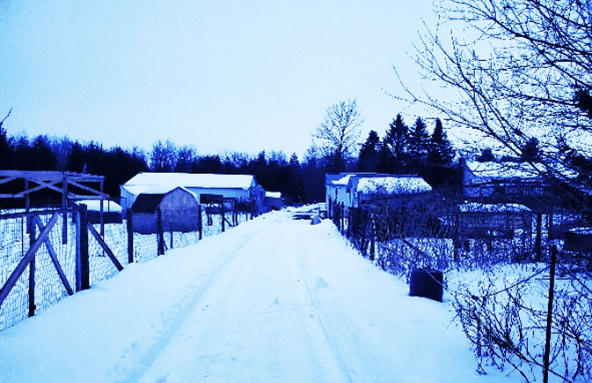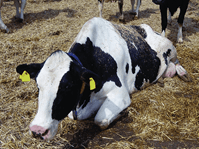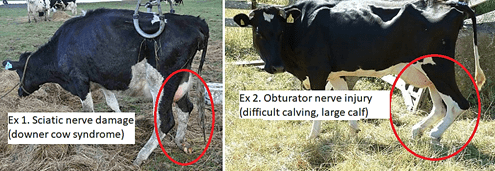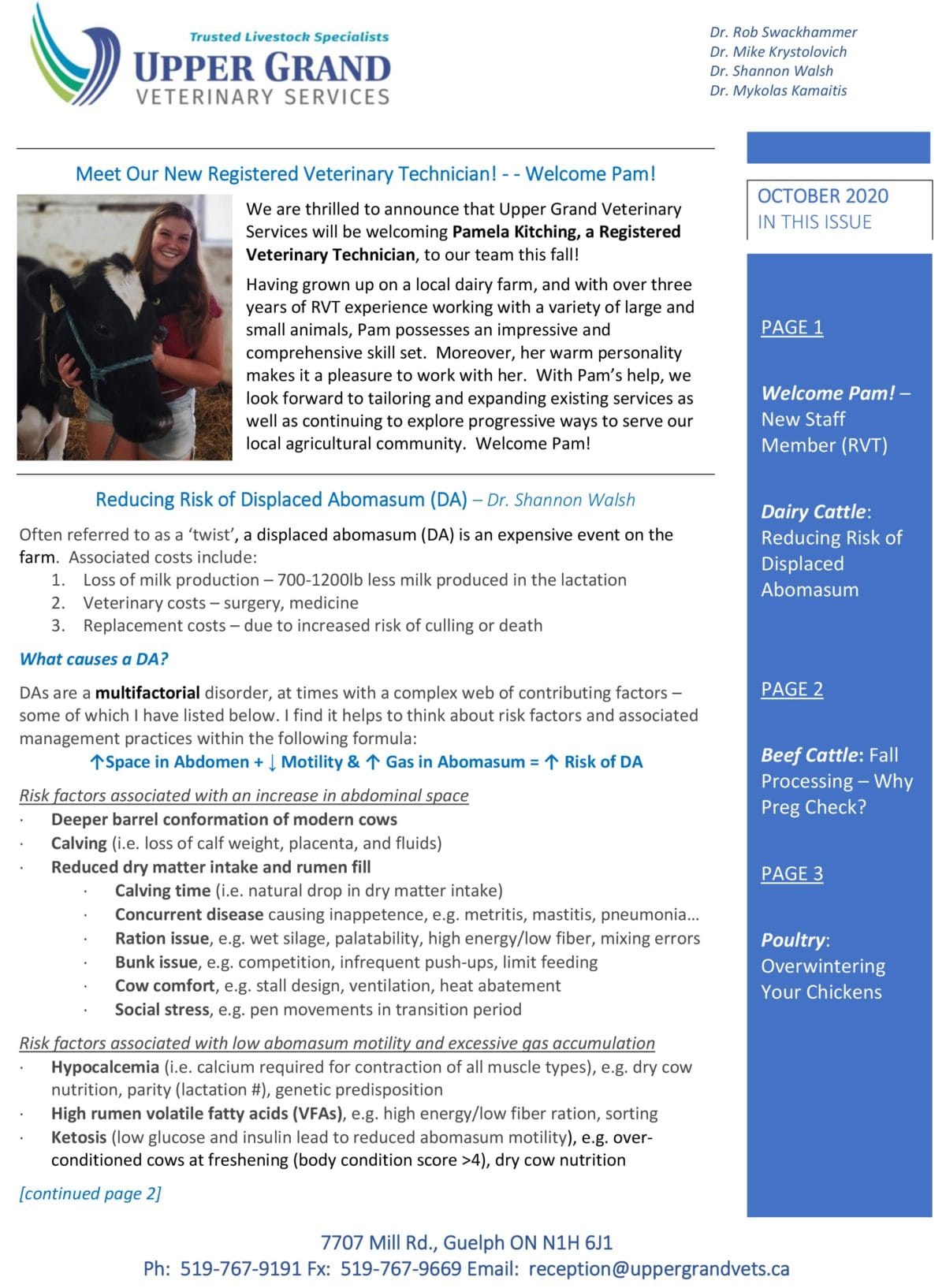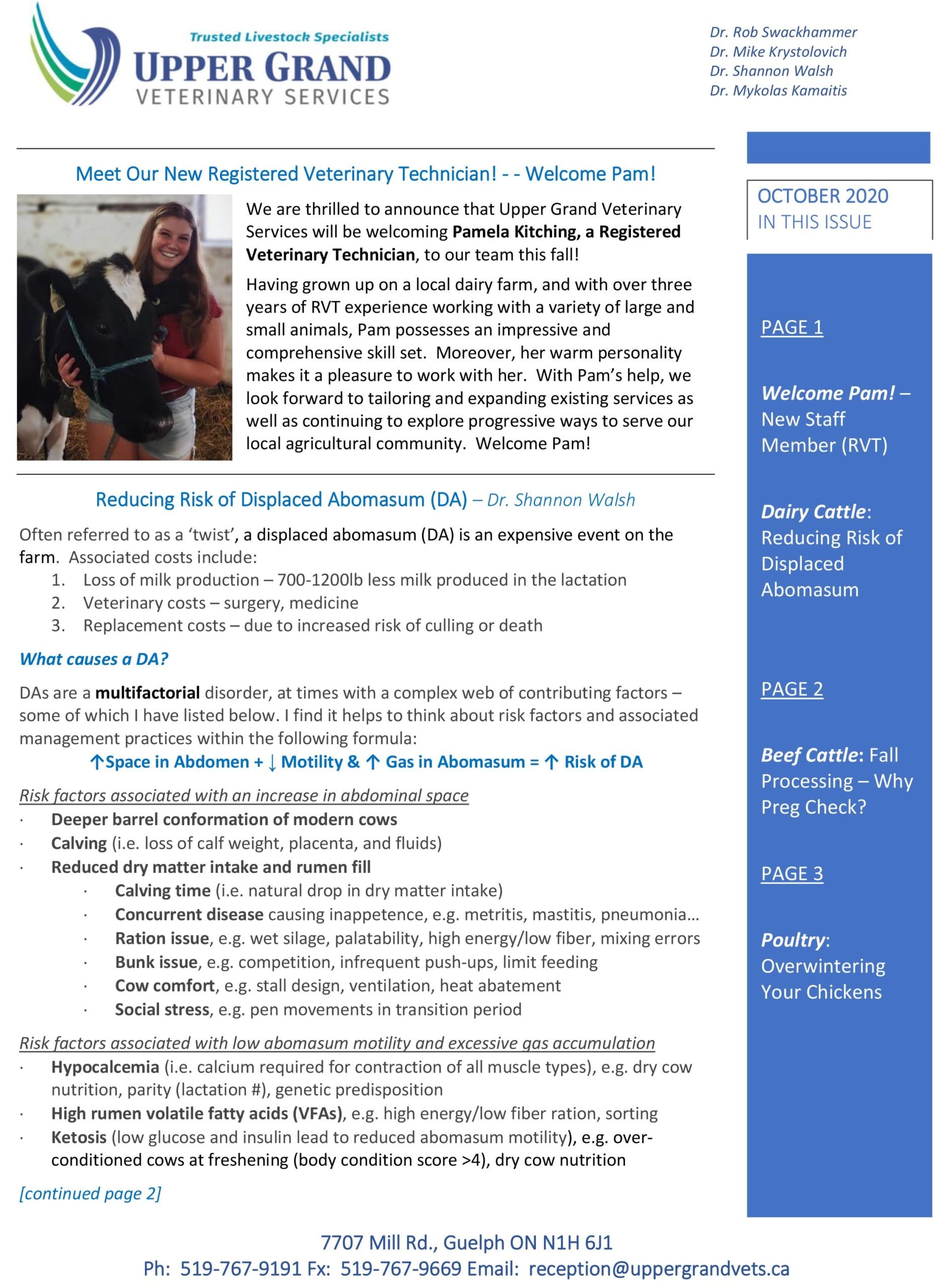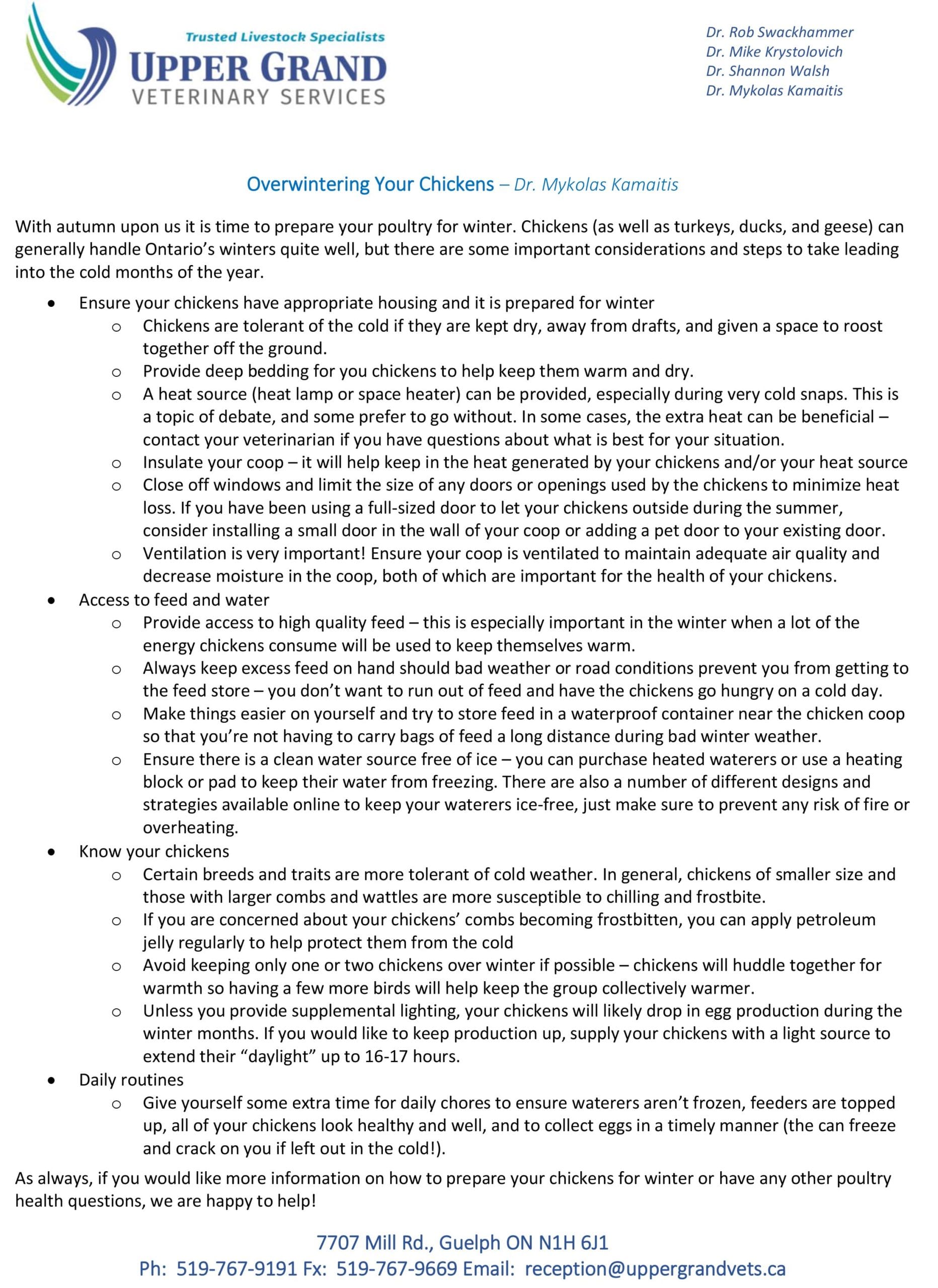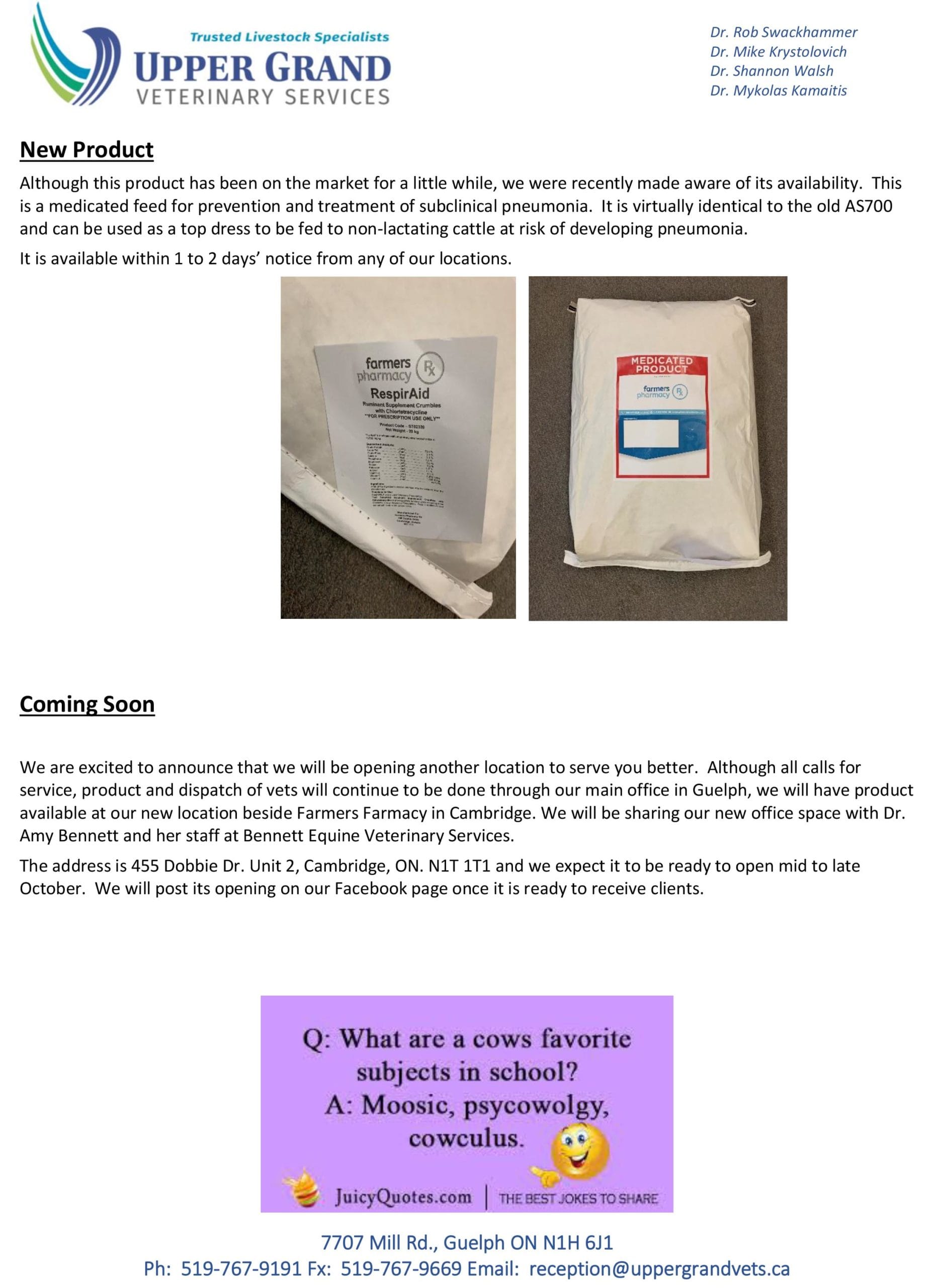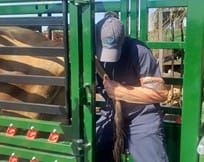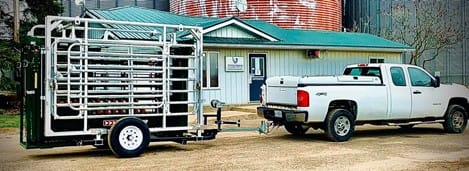– Dr. Mykolas Kamaitis
Whether or not this recent weather has caught you a bit underprepared for the cold months ahead, it is still not too late to get the farm ready for winter. The homestead or hobby farm shares many of the same winter challenges as large-scale farming operations, as well as some that are more unique to the homesteader. Although this article will not go into the nitty-gritty details of winter prep, it will highlight some key considerations regarding your livestock as we head into winter. For specifics on preparing your bees and poultry for winter, please visit our website at www.uppergrandvets.ca to check out our September and October newsletters.
During the spring and summer months it can be easy to expand your operation – not only is it the time of year most of us small farmers acquire broilers, turkeys, ducks, and hogs to grow out for late summer/autumn harvest, but the green pastures, flowing water and beautiful weather seem to make it easier to justify increasing the number of livestock on the farm. If, like me, you find yourself heading into winter with a few too many animals and not quite enough space to house everyone during the cold months, it is certainly time to downsize.
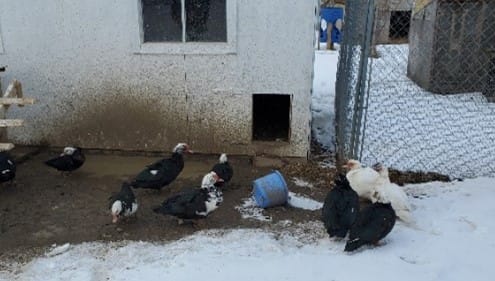 Shelter: The first thing to consider is whether you have the space to house your animals over winter. Most of our traditional livestock species tolerate Ontario winters quite well if they have an enclosed, well ventilated space to get out of the wind, wet and cold. There are many great resources online on species-specific requirements for floor space and supplemental heat (etc.) or you can always consult the UGVS veterinary team! Additional strategies like deep bedding with straw greatly improve animal health and comfort.
Shelter: The first thing to consider is whether you have the space to house your animals over winter. Most of our traditional livestock species tolerate Ontario winters quite well if they have an enclosed, well ventilated space to get out of the wind, wet and cold. There are many great resources online on species-specific requirements for floor space and supplemental heat (etc.) or you can always consult the UGVS veterinary team! Additional strategies like deep bedding with straw greatly improve animal health and comfort.
If you don’t have the space to accommodate your livestock over winter, you’ll either have to add housing and infrastructure or unload some of your animals by selling them live (sale barn, online, word of mouth, etc) or sending them to the processing plant. Even though it may be tempting, do not overcrowd a coop or barn as this increases the risk of disease in your remaining animals. Sometimes sending an older animal to slaughter is difficult for sentimental, logistical, or culinary reasons (old animals, particularly males tend to produce tougher meat). If your hesitation is culinary in nature, processing meat as ground works great – I recently made some amazing duck burgers with ground meat from my older Muscovy drakes.
Feed & Water: You also need to plan for watering and feeding your animals. Do you have ice-free water sources? Will it be feasible/practical to water your animals throughout the winter? Where will you be storing feed and how easy will it be to bring it to your animals as needed? Ensure you can provide ample high-quality feed throughout the winter. Your animals’ increased energy demands during cold weather mean that adequate nutrition is critical.
Production Goals: You should also consider your production goals throughout the winter. Is your focus to just keep your animals alive through the winter or are you hoping to achieve some productivity (eg. weight gain, production of offspring, eggs, milk, etc). If you are hoping to get some production out of your animals, ensure you read up on specific requirements. In the case of egg production in chickens for example, providing supplemental lighting to extend “day length” is key to maintaining a steady egg supply during the darker months. Sometimes providing basic feed and water is not enough to get what you want out of your animals.
If you have specific questions or concerns heading into winter on the farm, we are happy to discuss and help you develop a strategy for managing your livestock throughout the winter!
If you have any questions on these or other topics, please do not hesitate to contact one of our Veterinarians.


